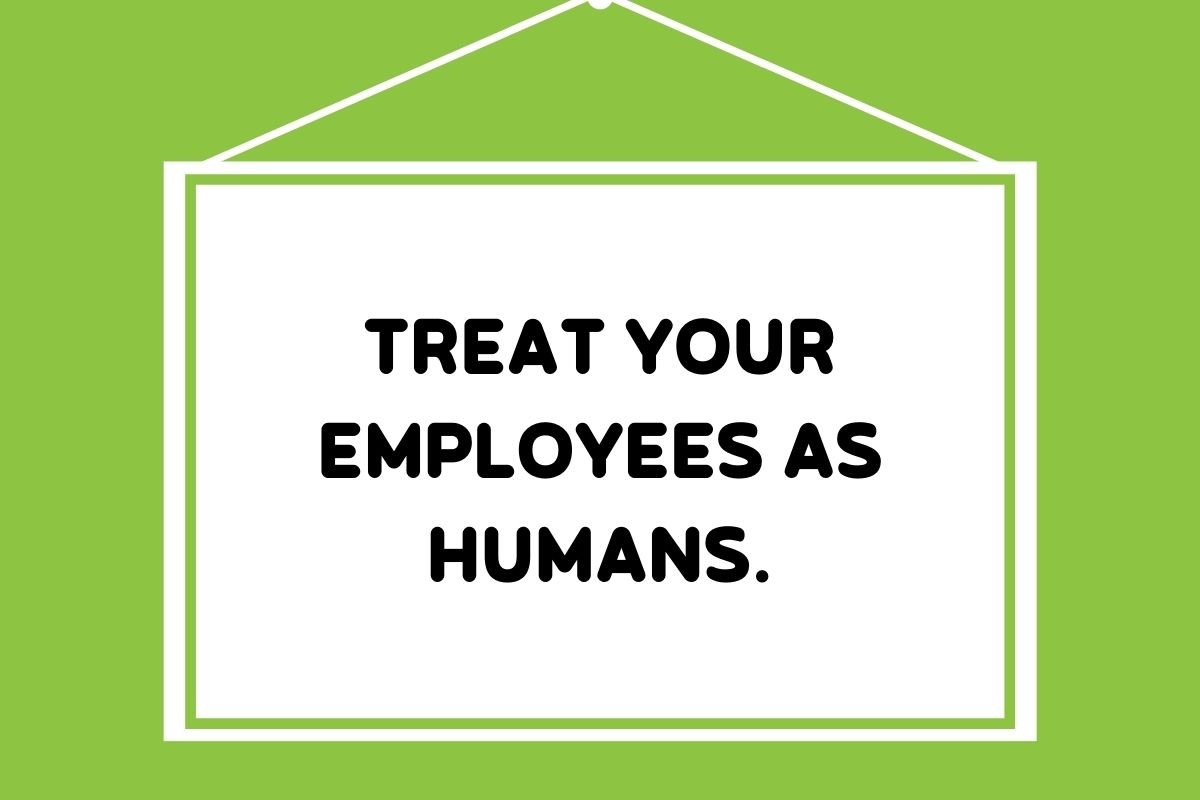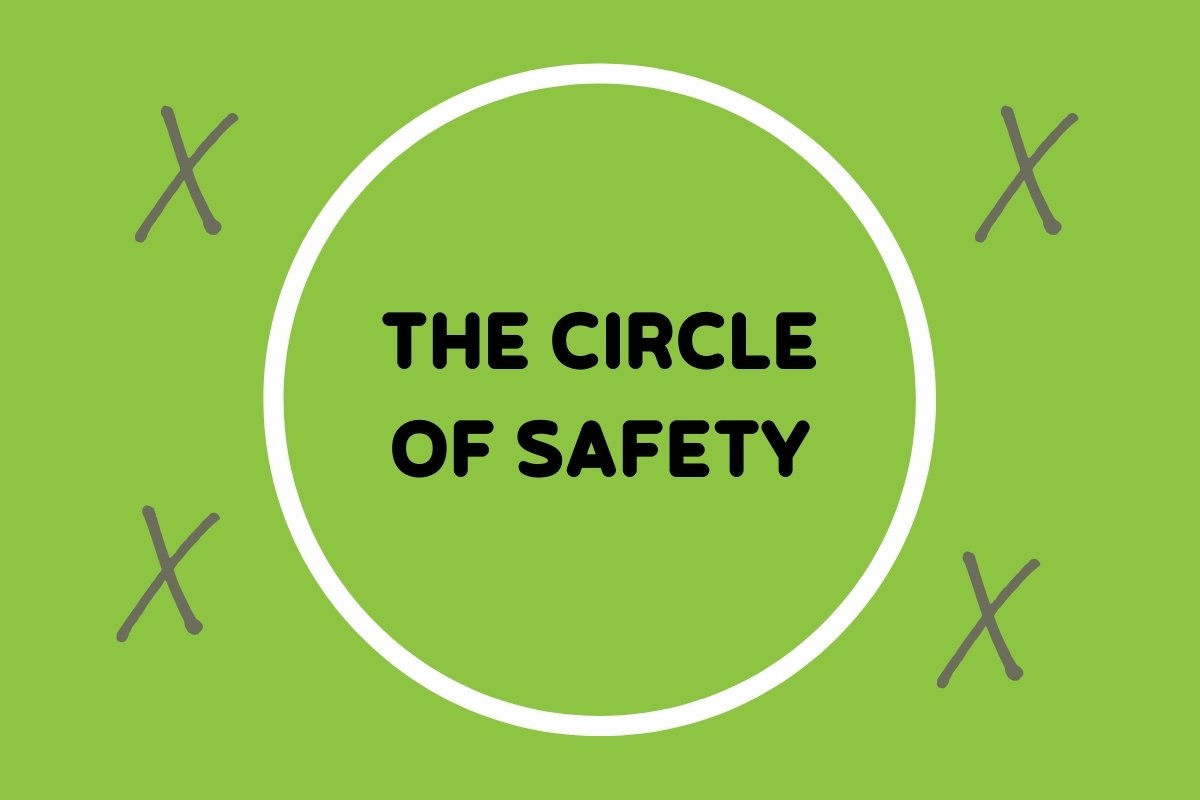1-Line Summary: Leaders Eat Last by Simon Sinek discusses true leadership qualities. It also teaches how building a system with a safe environment helps the members of an organization safeguard themselves from outside threats and helps them make deep connections with each other.
Last update on 2023-06-15 / Affiliate links / Images from Amazon
Who Should Read Leaders Eat Last Summary?
- Someone who aspires to be a great leader.
- An entrepreneur who wishes to build a successful business.
- An employee who wants to climb the promotion ladder in his company.
- An average person who would like to learn the qualities of a great leader.
- Someone who is doing research on leadership.
Get the Paperback copy: View price on Amazon
Get the Hardcover copy: Check price on Amazon
Get the Audiobook: Buy on Audible | Play free on Audiobooks.com
Leaders Eat Last Summary (PDF)
Have you ever wondered how big organizations work with so many people simultaneously, and that too while facing outside threats?
They can do so because they have great leaders at the top of the hierarchies that manage people at the bottom.
Indeed, it’s not a piece of cake.
The question here is:
What makes a leader great?
Well, in this book, Simon Sinek shines a light on all the things a great leader must know to build connections with the people at work.
He also shows what leadership is and what leadership is not.
Today, in this article, I will share critical insights or lessons that I’ve learned from this book.
Let’s roll.
Best Tools for Bibliophiles
- Listen to your Favorite Books on The Go: Try Audible and Get Up To 2 Free Audiobooks | Get 3 Free Audiobooks
- Read over 2 million e-books on any device: Sign up for 30 days free trial of Kindle Unlimited and read your favorite titles.
- Get free 2-day shipping of your favorite books and stream premium TV shows on Amazon Prime: Sign up for 30 days free trial of Amazon Prime.
- I use Notion to take reading notes, plan everything, and run all my businesses. (Notion is my Second Brain 🤯): Get Notion for free for personal use (paid for teams/businesses)
Lesson #1: Empathy Is One Of The Most Powerful Tools In An Organization

“The true price of leadership is the willingness to place the needs of others above your own.”
Simon Sinek, Leaders Eat Last
If you want to learn only one thing from this book, then remember this lesson:
Have empathy for your employees.
A great leader always tries to see things from other people’s perspectives in his organization.
When you are the CEO of your company, you have many choices to make. Some are profitable to you but not to your employees.
I’ll explain with an example:
Let’s say you have to increase revenue by the end of this month by taking on a big project, but you have a limited workforce.
What would you do in that case?
Would you increase the workload of your employees?
Or hire more people?
There would be a plethora of choices for you.
But the question is, what a great leader would do in such a perplexing situation?
A great leader knows that an organization can tackle any situation if it has a culture of sacrifice and service.
It doesn’t matter whether you get any attention or praise. It isn’t about how much profit/loss you go through, either.
A great leader always helps his employees to advance along with the organization.
Regardless of how big the challenges are, when people feel they are given priority and respect, they put in everything they have got to overcome them.
One who prioritizes others’ well-being over his is worthy of being a leader.
INSIGHT
Leaders are not the same as managers. If you want to learn how to become a great manager fast, check out this book summary: The New One Minute Manager
Lesson #2: Your Employees Aren’t Robots, Treat Them Like People

“You can easily judge the character of a man by how he treats those who can do nothing for him.”
Simon Sinek, Leaders Eat Last
In most organizations, the people at the top of the hierarchy treat the ones at the bottom as mere metrics.
And what do they do with these metrics?
They use them as analytics and generate a massive amount of dollars.
It’s true that in real life, it’s necessary to go through analytics to beat the competition and track the progress within an organization.
But when the leader treats his followers like some numbers he could use to profit himself, he forgets about the empathy and well-being of the very people who are the foundation of his organization.
When this happens, people stop pushing hard at their work.
They realize that their leader doesn’t value their effort.
Even simple work starts looking like torture to them.
Ultimately, the positive culture of empathy, growth, and well-being of all gets blown to smithereens.
So what’s the takeaway here?
Treat your employees as humans.
When you treat them like humans, they feel that the company trusts them.
They feel that their efforts aren’t going in vain.
The feeling that they contribute to the company’s advancement gives them the courage to push harder.
They naturally feel committed to their work, and without any pressure, they put out their best work.
Trust and empathy in an organization go hand in hand.
Once you show empathy towards others, you begin to earn people’s trust within your company, which is another hard thing to achieve in an organization.
Best Tools for Bibliophiles
- Listen to your Favorite Books on The Go: Try Audible and Get Up To 2 Free Audiobooks | Get 3 Free Audiobooks
- Read over 2 million e-books on any device: Sign up for 30 days free trial of Kindle Unlimited and read your favorite titles.
- Get free 2-day shipping of your favorite books and stream premium TV shows on Amazon Prime: Sign up for 30 days free trial of Amazon Prime.
- I use Notion to take reading notes, plan everything, and run all my businesses. (Notion is my Second Brain 🤯): Get Notion for free for personal use (paid for teams/businesses)
Lesson#3: Being A Leader Is Like Being A Parent
Once the leader starts seeing his employees like a family, the culture of the company shifts from ‘working’ to ‘caring.’
So, what does a good parent do?
He provides his children with all the things needed for his children’s well-being.
A leader is very much like the sun.
The sun provides sunlight relentlessly to everyone on the ground.
Regardless of what the season is, it never stops giving sunlight.
While on the other side, people on the ground feel gratified and use sunlight to advance their lives.
Similarly, a great leader selflessly provides its employees with all the resources they need.
And in return, the employees manage all the groundwork.
Both sides do what they must to reach the goals of the company.
This type of work environment encourages all the organization members to contribute.
No matter where an employee is in the hierarchy, he feels equally motivated and energetic to work.
They no longer work for themselves. They start working for each other.
In the best-case scenario, the workplace feels like a paradise where everyone works towards a single goal.
When people get treated like a family, they enjoy their job and engage more with the organization.
Lesson #4: Create a Circle Of Safety
The image below represents the circle of safety:

The crosses here represent “danger.” And the “circle” represents the environment of an organization.
There is a safe environment within this circle, while dangers and threats exist outside the ring.
Every organization, whether big or small, is prone to outside threats.
These outside threats often lead to the organization’s downfall and shatter it to pieces.
A true leader does cope with outside threats by creating a safe environment within the organization.
A safe environment within an organization allows the employees to thrive and also helps in avoiding internal rivalries.
When the organization holds a strong bond with its employees, it becomes strong enough to face threats from outside.
Now imagine what would happen if the people within an organization start facing dangers from inside?
The whole culture would shatter and result in rivalries among each other.
And when this happens, the organization becomes vulnerable to outside threats.
When attacked by both inside and outside threats, the leader and followers suffer significant damage.
What does an ideal organization do?
It maintains its circle of safety and makes it so strong that no threat penetrates its shield.
It’s like a bulletproof jacket worn by a military man in a war.
The jacket protects him from all those intimidating bullets in the circumstances where you never know when you’ll get hit by one.
When people are within this circle of safety, they feel safe and become relaxed.
And therefore, they focus more on pursuing their goals instead of fearing outside threats.
A true leader creates a system to ensure that this blanket of safety, trust, and cooperation fully covers its organization so that people feel safe and focus on their objectives.
Creating a safe environment within an organization is not a fancy management theory.
It is all based on our biology and anthropology.
Lesson #5: We’re Built To Work Together

“The ability of a group of people to do remarkable things hinges on how well those pull together as a team.”
Simon Sinek, Leaders Eat Last
It has been since ancient times that humans prefer to be a part of the community and work within that.
Hunters and gatherers worked together to survive by gathering food supplies and other basic needs.
Our systems are built to achieve what we can’t do alone by working together.
For example, it was hard to hunt an animal for meat by a single person.
But by working in group formations, hunters could quickly gather food for an entire week.
Working together improved their efficiency and helped them survive.
They could work for themselves and the community to future-proof themselves from threats.
Fortunately, we don’t need to explore the forests to hunt and find food for ourselves and our families in present times.
We barely need to move at all. The necessities can easily be fulfilled.
Today, our necessities have turned into endless desires of wealth, happiness, mindfulness, and so on.
Likewise, outside threats have also changed significantly.
Even though we have developed rapidly in recent centuries, our biology hasn’t changed that much.
When it comes to survival, we still perceive the outer world as a place of threats.
Earlier, we used to worry about wild animals and food supplies, now we worry about our careers and opportunities.
When it comes to an organization, we’re constantly surrounded by threats. A great leader ensures that people work together and safeguard or prepare themselves for future threats.
Recommended Summary: How to Win Friends and Influence People Summary: 24 Incredible Lessons on Relationships
Lesson #6: The Incentive System Of Mother Nature

As you just read, our biology evolves to preserve our well-being.
Mother Nature has developed an incentive system to ensure the well-being that helps us survive and thrive, especially in harsh circumstances.
This is the only system responsible for instincts that urge us to take the best actions in our interests.
Whenever there is a threat, our defenses go up, and when there is an opportunity, it encourages repeat behaviors.
So what’s the point of knowing this? It’s common knowledge, isn’t it?
A great leader understands what guides a person to take specific actions.
Knowing about the fundamental systems that guide us makes you better equipped to understand other people.
And that’s how you progress towards outstanding leadership.
To make it simple, understand that our lives revolve around these biological chemicals:
Your instincts, mood, feelings, etc., all are guided by the release of these chemicals in your body.
When you understand how these chemicals work, you better control your actions and behaviors.
And therefore, you understand others better.
Lesson #7: Reality Is Way Different From Ideal Leadership
It feels good to imagine an ideal leader who looks out for his people.
But in reality, most of the leaders are selfish people who only care about themselves.
It’s good to discuss what makes a great leader, but it’s pointless because you won’t find many in real life.
These days, people face threats from within the organization. There is no circle of safety at all.
The leaders, most of them, manipulate people and see them in abstraction.
To them, their employees are mere numbers that make them revenues.
Moreover, employees too feel frustrated at work and don’t feel that they contribute to the advancement of the organization.
Empathy and Humanity in businesses, these days, look like a thing of the past.
Today, the big corporations are being run by intelligent executives, not by great leaders who can lead people.
“No one wakes up in the morning to go to work with the hope that someone will manage us. We wake up in the morning to go to work with the hope that someone will lead us.”
Bob Chapman, CEO of Barry-Wehmlller
Lesson #8: Abstraction And Dehumanization are two biggest problems of today’s world
Unlike the era when humans had few resources and knowledge, this era is filled with an abundance of everything you can think of.
Earlier, we had dangers surrounding us, and now we have only a few.
Due to the availability of all the things in abundance, things have lost their value.
And the same has happened with humans.
As everything is scaling up, people lose touch with human values like empathy, trust, honesty, etc.
We no longer see each other as humans. We are now business leads, customers, emails, Facebook profiles, Gmail accounts…
It won’t be wrong to say that humans turn into virtual identities.
Due to the abstraction of people, we are tending more towards inhuman behavior.
Result?
Dehumanization.
The Key Takeaways From “Leaders Eat Last By Simon Sinek”
Let’s wrap up the key points from this summary:
- Have empathy for your employees or followers.
- Be a leader who looks after his people.
- See your employees as human beings.
- Understand your biological chemicals and adapt.
- Try to create a healthy and safe environment within your organization.
- Be more human than anything else.
Extra lessons you could learn on Blinkist
- Why a leader should put others ahead of himself to fulfill a vision.
- How modern society has become addicted to better and faster performance.
- How a leader decides the company’s culture and values.
You won’t be charged if you cancel before the trial ends. There is no risk involved.
Click here to claim your Blinkist 7-Day Risk-Free Trial
Best Tools for Bibliophiles
- Listen to your Favorite Books on The Go: Try Audible and Get Up To 2 Free Audiobooks | Get 3 Free Audiobooks
- Read over 2 million e-books on any device: Sign up for 30 days free trial of Kindle Unlimited and read your favorite titles.
- Get free 2-day shipping of your favorite books and stream premium TV shows on Amazon Prime: Sign up for 30 days free trial of Amazon Prime.
- I use Notion to take reading notes, plan everything, and run all my businesses. (Notion is my Second Brain 🤯): Get Notion for free for personal use (paid for teams/businesses)
Leaders Eat Last Review
Last update on 2023-06-15 / Affiliate links / Images from Amazon
This book taught me that authentic leadership comes at a price.
One can’t be a true leader unless he is willing to put his well-being over his people.
Many things written in this book point us towards an ideal world where leaders respect their people and help them grow, and at the same time, people do their best to meet the organization’s objectives.
But no matter how sweet it sounds, it isn’t always true.
I can’t say this for sure, but I believe there is still significant room for development in this regard.
As the book is named “Leaders Eat Last,” what does this phrase mean exactly?
If you’re still confused about this, then let me tell you.
This means that great leaders give priority to their people before their self-interests.
Overall, this is one of the best books on leadership for those wishing to become a great leader someday and guide people towards prosperity.
Get the Paperback copy: View price on Amazon
Get the Hardcover copy: Check price on Amazon
Get the Audiobook: Buy on Audible | Play free on Audiobooks.com
Last update on 2024-02-18 / Affiliate links / Images from Amazon
Final Thoughts
I’m glad you made it through!
Our world truly needs great leaders. I believe Simon Sinek wrote this book to educate people and create great leaders.
This article would certainly help others become leaders they wish to see in the world.
I highly recommend reading The 360 Degree Leader Summary to understand how you can become an influential leader even without becoming a CEO.
Read First Break All The Rules Summary if you want to learn about the difference between a manager and a leader. It will teach you how to become an effective manager.
Now it’s your turn
If you enjoyed reading the Leaders Eat Last summary, you could help others by sharing this article with your friends and family members.
You can also subscribe to my free email newsletter to stay updated with the newest book summaries.
Want to consume more insightful, power-packed content like this in the future?
Subscribe to the weekly email newsletter.
Subscribe to YouTube channel for animated video books.
Try Amazon’s Audible 30-days Free Trial and Get 2 Audiobooks for free.







well article
Thanks.